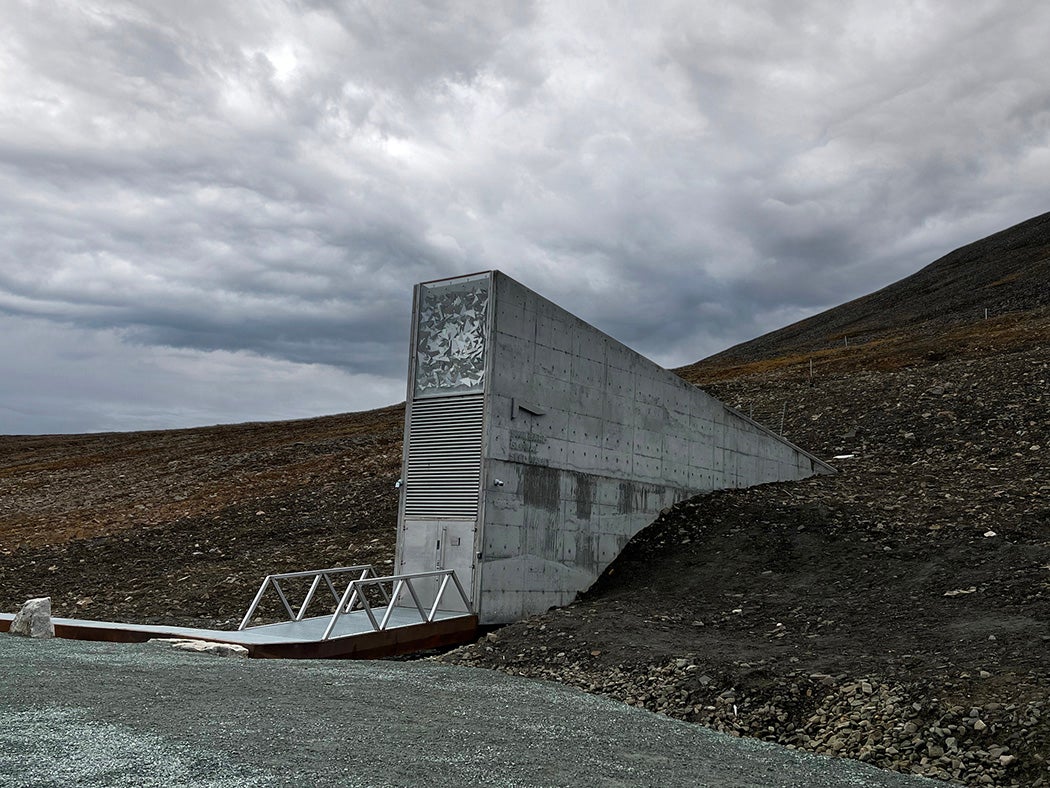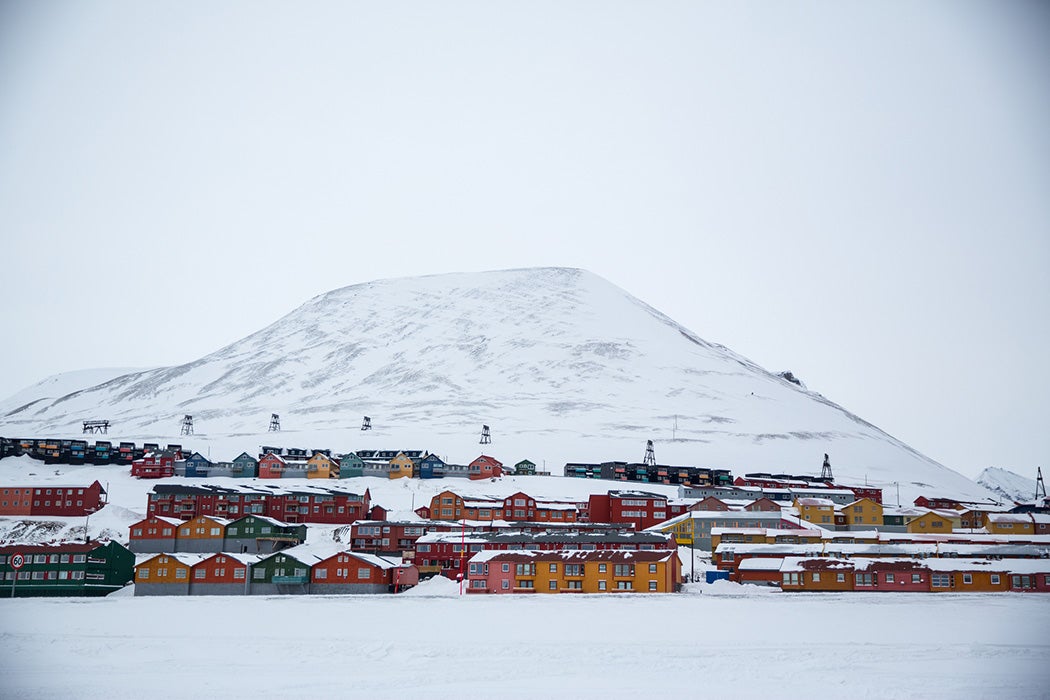Attempts to find a northern sea passage to China in the late sixteenth century led to predictable and multiple deprivations among nautical pioneers. But few of them are more disconcerting to modern sensibilities (and taste buds) than the reports of the effects that dinners of polar bear meat had on captain and crew.
“Wee eate some of her flesh; but wee brookt it not well,” was one reaction voiced by Willem Barents’s crew during their 1596 Arctic expedition. Later attempts to eat just the liver of the bear were no more successful; the diners became sick with Vitamin A toxicity, writes historian of Arctic exploration Louwrens Hacqebord.
These Dutch sailors were among the first to set sight on a barren island festooned with crenelated peaks. Captain Barents called it Spitsbergen, meaning “pointed mountains,” and initiated the first attempts to create something approaching civilization in one of the most uninhabitable climates on earth.
Hacquebord describes the pernicious conditions of the crew’s journey and dining habits in more detail. Stuck in pack ice in the Kara Sea, Barents and his men used planks from their ship to build a cabin, an inevitably basic structure which, as Hacquebord relates, “scarcely offered sufficient shelter against the weather. In spite of the heating, ice 5cm thick frequently formed on the inside of the walls.”
Barents had arrived in a place where there’s no sunlight for more than 100 days of the year, where the polar night, at its longest, delivers four months of continuous darkness.
The Dutch would, over the coming century, bring up to 2,000 people to Spitsbergen to work at a whale processing plant in the summer months. But, as Lawrence M. Sommers points out in a 1952 essay on the region, the decreasing demand for whale oil (coupled with the extinction of the bowhead whale by avaricious hunters) meant that, by the early eighteen century, this factory outpost had been abandoned.
“From about 1700 to the middle of the nineteenth century Russia was the most active nation on Svalbard,” writes Sommers.
Russians spent the winters hunting polar bears, seals, reindeer, foxes, and walruses for their furs. In the early part of the eighteenth century Norwegian hunters visited the major island of Vest Spitsbergen, and later Norwegian sealing expeditions frequented Svalbard waters.
The name Svalbard (encompassing the island of Spitsbergen, the island group Kong Karls Land, Bjørn [Bear] Island, and six other main islands) was a Norwegian invention, translated, aptly, from the Norse for “Cold Coast.”
Some heat was about to enter the region, politically at least, in 1920. This was when Norway was officially granted sovereignty over Svalbard as part of the Paris Peace Conference following the end of the Great War, beating off claims to the islands from the United States, Great Britain, Sweden, the Netherlands, Germany, and the Soviet Union.
Yet the Svalbard Treaty, which wasn’t fully actioned until 1925, was an unusual one, in that it prevented Norway from enjoying full sovereignty over the islands. As Kristine Offerdal, a specialist in international relations of the High North, explains in a 2016 research report,
stakeholders from signatory states enjoy the same rights of access to Svalbard as does Norway, for example, when it comes to exploitation of natural resources. Norwegian authorities regulate all activity on Svalbard, but the principle of non-discrimination in the treaty implies that Norway cannot introduce preferential treatment based on nationality.
The consequences of the treaty mean that today, Svalbard’s 3,000 or so residents, many of whom are working in the fields of biology and environmental science, come from fifty-five different countries.

The most northerly destination on Earth to which there are scheduled, commercial flights, Longyearbyen, the main settlement on Spitsbergen, contains a rather sinister-looking structure, with an equally baleful moniker. The “Doomsday Vault,” as it is known to locals, is tunnelled into the sandstone mountains that soar above the town. Inside, a long tube lined with steel and concrete leads to vast concrete rooms where, on shelves, are housed samples of seeds which, in theory, could be used to combat the consequences of future natural or human-made disasters.
Detailing the history of what she calls a “Noah’s Ark” for the world’s seeds, Marte Qvenild writes that “a global seed vault at Svalbard is welcomed as a much-needed ‘safety net’ which will secure the valuable international collections of plant genetic resources from the potential risk of extinction.”
Today, the majority of tourists who make it to Svalbard may cast their eyes, briefly, toward the entrance to the seed vault. But their priorities are invariably focused on less ominous attractions. One of the last true wildernesses in Europe, Svalbard has long promised visitors a view of nature that edges toward the sublime. But the cruise ship industry that gives visitors a glimpse of polar bears, fjords, and immense glaciers, may find that Svalbard can’t sustain the thrills that its passengers demand.
As Marta Bystrowska writes regarding the impact of sea ice on Svalbard tourism, “evidence…shows that the negative consequences of sea ice loss for cruise tourism are likely to occur in the near future, which is also a concern for the Canadian Arctic.”
Weekly Newsletter
Her study suggests that the presence of sea ice is a major draw for tourists, such that “the decreasing attractiveness of ice-free sites, together with crowding problems, may shift interest from destinations such as Svalbard to newly opened-up locations, such as in the Russian Arctic.”
In fact, she notes that some in the cruise industry were already considering leaving Svalbard for new (ice) waters.
The irony of Svalbard’s nascent popularity and recognition on the world stage could also result in the decline of everything that made this outpost such a pristine and unique place. The ultimate example of a “terra nullius”—a territory without a master—is facing challenges that even Captain Barents and his crew of reluctant polar bear eaters may have struggled to navigate.







